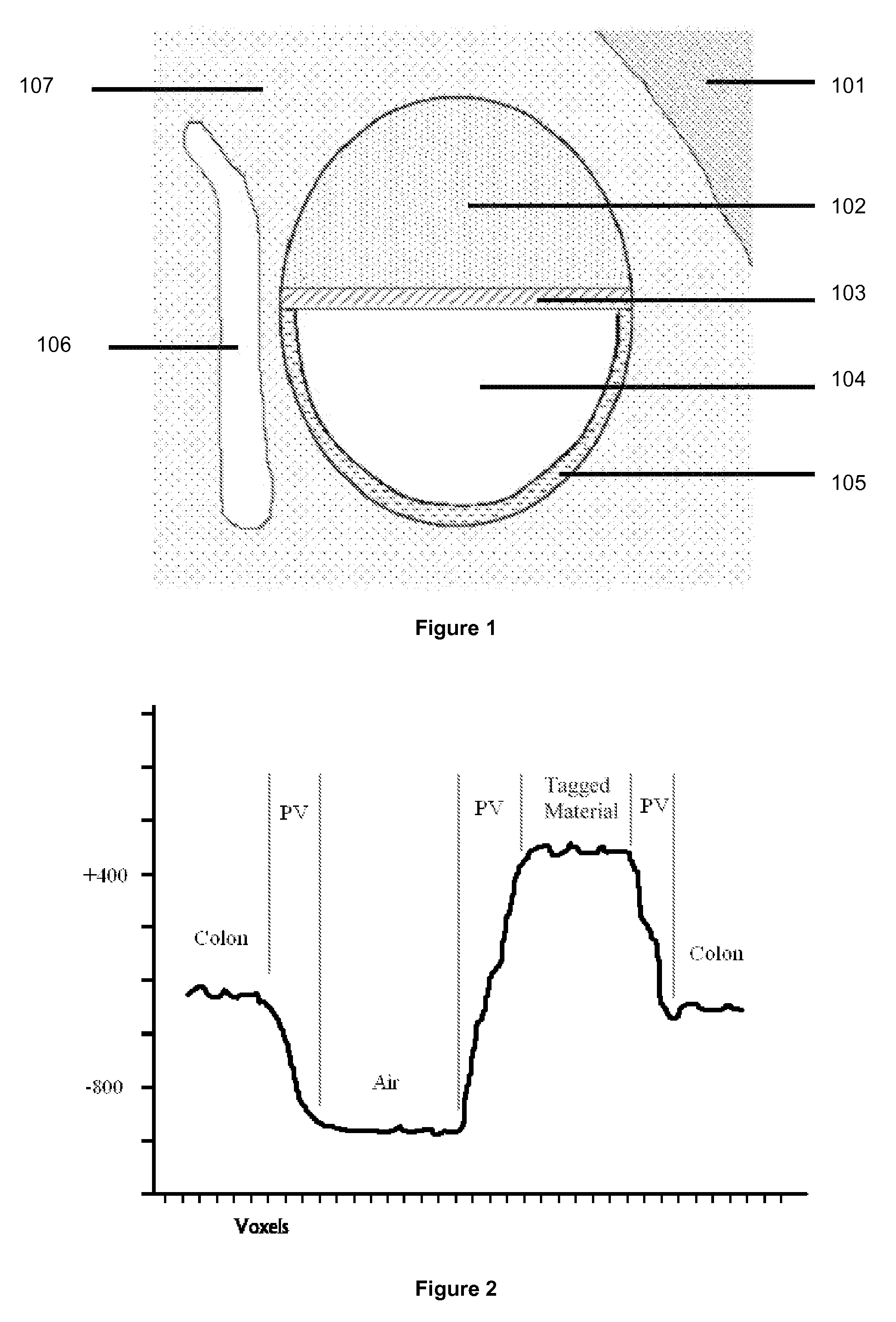Electronic Cleansing of Digital Data Sets
a digital data and electronic data technology, applied in image data processing, diagnostics, applications, etc., can solve the problems of ctc limitation, rapid transition, unwanted edges in the processed image, etc., and achieve the effect of reducing processing time and computer memory requirements
- Summary
- Abstract
- Description
- Claims
- Application Information
AI Technical Summary
Benefits of technology
Problems solved by technology
Method used
Image
Examples
Embodiment Construction
[0114]Electronic cleansing provides a means of virtually removing stool and other residual materials and fluids that could potentially obscure important features in a CTC scan, and as such, electronic cleansing of tagged material from a CTC data set represents a viable alternative to traditional physical cleansing. Prior to electronic cleansing the patient is required to ingest a tagging material (typically containing barium), which strongly absorbs X-rays. Ideally, tagging material should be uniformly absorbed by the colon contents to allow easy differentiation with colon wall tissue, including polyps. However, tagging is often not uniform in practice, resulting in over- and under-tagged material in various sections of the bowel. Also, low imaging resolution results in the phenomenon of Partial Volume voxels (with intermediate intensity values) lying between tagged material (TM) and regions of air or colon. This complicates the task of digital removal of tagged material.
[0115]When ...
PUM
 Login to View More
Login to View More Abstract
Description
Claims
Application Information
 Login to View More
Login to View More - R&D
- Intellectual Property
- Life Sciences
- Materials
- Tech Scout
- Unparalleled Data Quality
- Higher Quality Content
- 60% Fewer Hallucinations
Browse by: Latest US Patents, China's latest patents, Technical Efficacy Thesaurus, Application Domain, Technology Topic, Popular Technical Reports.
© 2025 PatSnap. All rights reserved.Legal|Privacy policy|Modern Slavery Act Transparency Statement|Sitemap|About US| Contact US: help@patsnap.com



